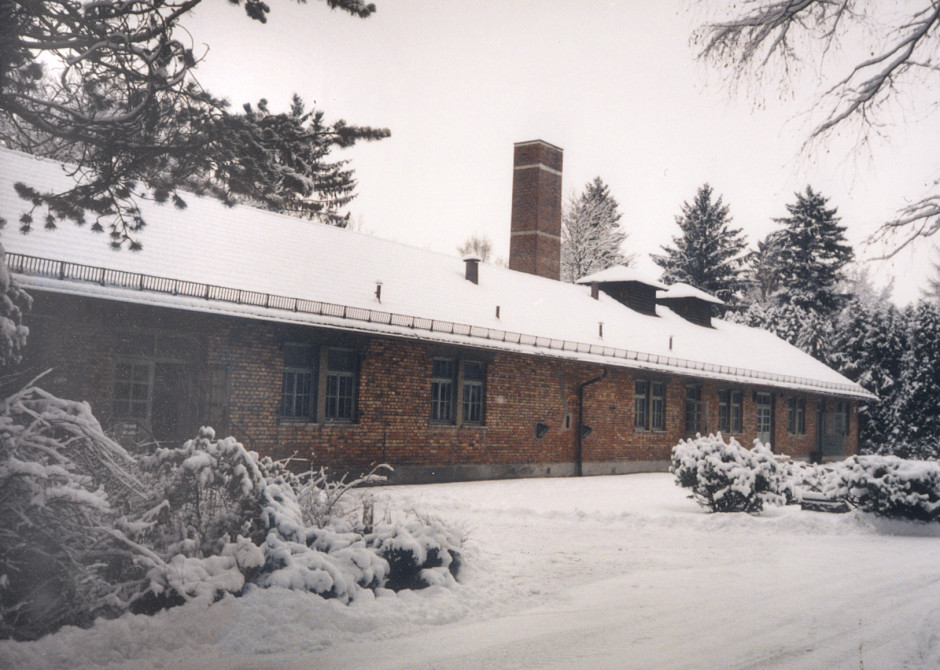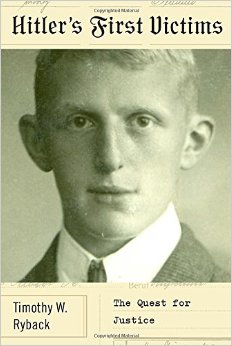In the spring of 1933, less than four months after Adolf Hitler’s accession to power, four Jewish inmates in the newly opened Dachau concentration camp were killed while supposedly trying to escape. In fact, they were murdered by SS guards, who fired the opening shots of an incremental process which culminated in the Holocaust.
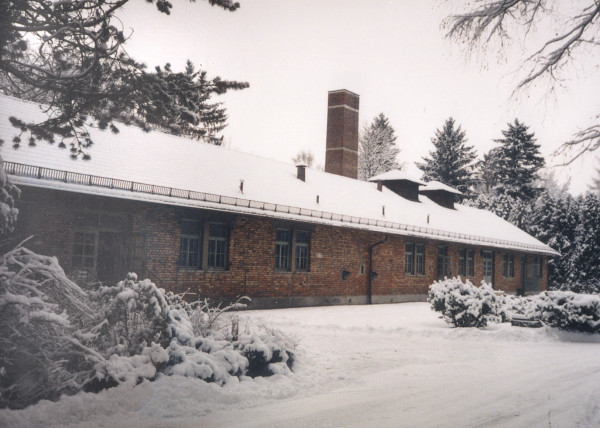
The homicides were brought to the attention of Josef Hartinger, the Bavarian deputy state prosecutor, and he decided to prosecute the culprits.
Incredibly enough, Hartinger risked everything, his career and his life, in the “unflinching pursuit of justice,” writes Timothy Ryback in Hitler’s First Victims: The Quest for Justice, published by Alfred A. Knopf. “While Hartinger’s fight for accountability couldn’t stem the tide of Nazi atrocity, his story suggests how vastly different history might have been had more Germans acted with equal courage and conviction in that time of collective human failure.”
Dachau, near Munich, had been the site of a World War I armaments factory that produced bullets for pistols, rifles and machine guns and specialized equipment for slicing barbed wire, shooting down observation balloons and piercing armour.
With Germany’s capitulation, the plant closed. For the next decade, it stood as “a haunting reminder not just of military defeat and political humiliation but also of the ruinous impact on the local economy.”
As Ryback observes in this vigorous and thoroughly researched account of an unheralded German hero, the adjacent town of Dachau had also been an artistic hub in the late 19th century, having attracted more than 1,000 painters, including the impressionist Max Liebermann and the modernist Emile Nolde.
But much to Dachau’s eternal shame, the town became synonymous with the camp. On March 20, 1933, the Nazi regime announced that Dachau had been converted into a facility for political prisoners. The first detainees, a mix of social democrats, communists and trade unionists, arrived two days later.

The four prisoners who had the dubious distinction of being the first victims of Nazism were the university students Arthur Kahn, Rudolf Benario, Ernst Goldmann and Erwin Kahn, all of whom lived in southern Germany.
Hartinger, then 39, suspected they had been intentionally shot on the explicit orders of the commandant, Hilmar Wackerle. In his memoirs, Hartinger would write, “My reasons were based not only on the physical circumstances but in particular on my assessment of the personalities I encountered in the camp, and especially on my evaluation of … Wackerle. I also had to include in my deliberations the fact that all those who had been shot were Jews.”
A rising star in the civil service, Hartinger was a devout Roman Catholic and a member of the centrist Bavarian People’s Party, whose aversion to the Nazi Party was well known. Following Hitler’s failed putsch in Munich on November 11, 1923, Hartinger joined a mass anti-Nazi demonstration.
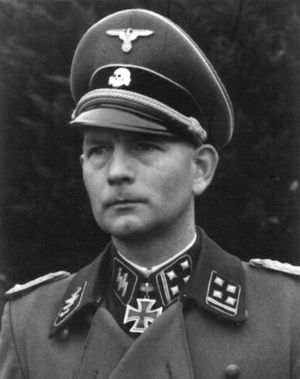
Now, 10 years later, Hartinger had every reason to believe that prosecuting SS guards for premeditated murder would be problematic. Bavarian courts were staunchly conservative and had become increasingly cautious under the new Nazi government.
Rumours of Nazi atrocities throughout Germany had begun to proliferate within weeks of Hitler’s takeover, but the Nazis dismissed them as Jewish horror propaganda.
Although Hartinger was not favorably disposed toward the Nazis, he knew it would be in his best interests to remain silent and defer to his superiors. Casting these compelling considerations aside, he issued murder indictments and arrest warrants not only against the four SS guards who had killed the Jewish inmates, but against Wackerle and several of his associates.
On the recommendation of SS chieftain Heinrich Himmler, Hitler quashed Hartinger’s indictments, but amid the judicial wrangling, the killings at Dachau temporarily stopped and Wackerle was dismissed from his position.
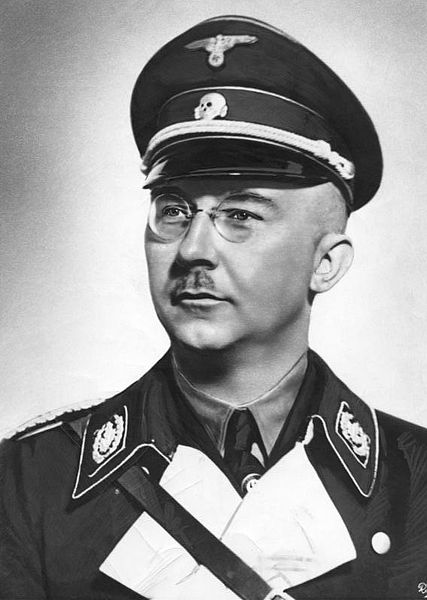
During World War II, Hartinger served in the army. Captured by the Americans in 1944, he spent the next two years in a prisoner-of-war camp. He then returned to the civil service. In 1947, a German prosecutor used his files to go after Germans who had committed crimes in Dachau.
A modest man, Hartinger rejected postwar efforts to honor him. “I was only doing what my sense of duty and my professional oath demanded,” he explained. But he acceded to a request from the Bavarian minister of justice to write his memoirs, which were published in 1984, the year he died.
